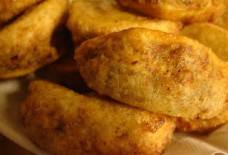5 Ways to Show Palestinian Solidarity

By: Arab America Contributing Writer
In the past couple of weeks, numerous videos have gone viral showing individuals getting reprimanded for showing their support for Palestine by wearing the keffiyeh. Berlin recently banned Palestinian keffiyehs in schools. Despite the censorship of the symbolic Palestinian keffiyeh, people in support of Palestine are finding new ways to show their solidarity at protests, on social media, and in their day-to-day lives.
1. Palestinian Embroidery

While the keffiyeh is now under scrutiny due to its mainstream popularity, people in solidarity with Palestine are finding new ways to show their support through wearing Palestinian embroidery.
Palestinian embroidery, or tatriz, is fundamental to Palestinian culture. Intricate designs, usually sewn in black and red, are divine symbols of Palestinian art and craftsmanship. Students and individuals are now wearing scarves with Palestinian tatriz to not only show their appreciation for the art form but also stand with the liberation movement.
2. Watermelon

The watermelon emoji has taken off on Instagram and TikTok as an implicit stance in favor of Palestine’s liberation movement. Users are making posts and stories with watermelon emojis on their caption. Content creators on TikTok are using one of TikTok’s watermelon seed games to show their support for Palestine.
The story of the watermelon is not new; it is as old as the liberation movement, dating back to 1967. The symbol emerged from the Six-Day War, when Israel seized control of the West Bank and Gaza, and annexed East Jerusalem. During this transition period, the Israeli government criminalized the displays of the Palestinian flag in newly Israeli-governed territories. To protest the new legislation, Palestinians bore slices of watermelon around, brandishing the fruit’s colors of red, black, white, and green. Similarly, social media users are using the watermelon emoji to counteract social media platforms’ censorship and shadowbanning of pro-Palestine content.
3. Palestinian Key

The Palestinian key, while not popular in mainstream media, plays a significant role in Palestinian nationalism. The key symbolizes the return of the Palestinian residents and the Palestinian diaspora to their homelands. Thus, the key does not only symbolize the emotional connection to the land of Palestine but also the physical idea of the right to return.
The Palestinian key can be seen all throughout the world. Protestors carry keys during protests along with the Palestinian flag. A Palestinian restaurant in Doha, Qatar, holds the Guinness World Record for the world’s largest key.
4. Handala

Handala is a cartoon character that personifies the struggle of the Palestinian people. The prominent national symbol was created in 1969 by political cartoonist Naji al-Ali and published in Al-Seyassah, a Kuwaiti daily newspaper. The cartoon “portrays war, resistance, and the Palestinian identity with astounding clarity.”
The name Handala comes from a bitter fruit from Palestine, in the name of Palestinian pride and struggle for liberation.
5. Palestinian Poppy

The Palestinian poppy represents the relationship between Palestinians and their land, the bitter memories of bloodshed during wars. The colors of the poppy also resemble the colors of the Palestinian flag – red, black, and green. The poppy is often depicted in Palestinian art and literature, in famous works by prominent Palestinian poets Mohammed Darwish and Samih al-Qasim.
Despite censorship attempts, individuals committed to expressing solidarity with Palestine are continually devising innovative methods to make their voices heard. From utilizing decentralized communication platforms to creatively leveraging art, social media, and grassroots initiatives, people are finding resilient ways to share their support for the Palestinian cause. This adaptability underscores the power of collective determination in circumventing restrictions and fostering a global community united in advocating for justice and human rights in the region.
Check out Arab America’s blog here!








